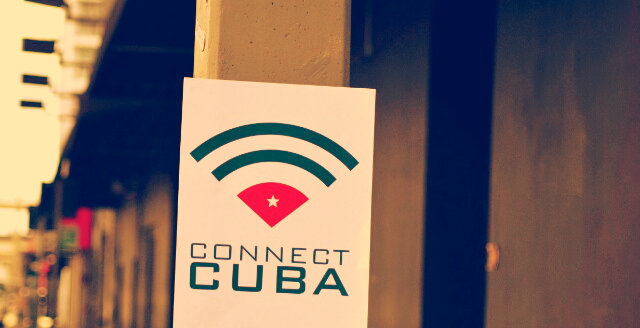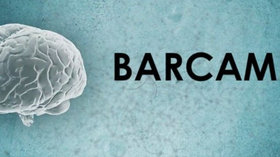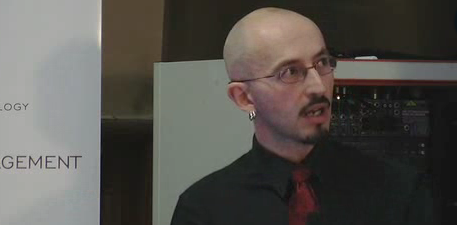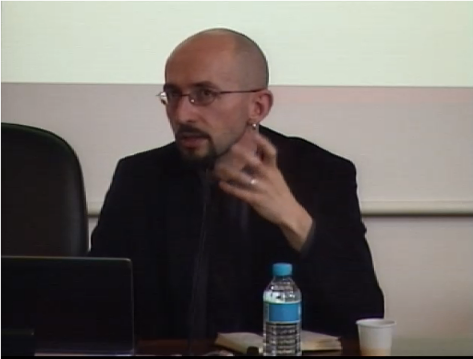Tag: Conférences

Cuba, hasta la innovación
Alors, c’est confirmé. Après quelques situations rocambolesques avec mon passeport, mes billets d’avion et mon visa, me voilà prêt pour… read more Cuba, hasta la innovación

A la journée d'études "Potlatch notionnel sur la performance" (EHESS, Paris, 29 mai 2012)
Le mardi 29 mai 2012, le sociologue Antonio Casilli, auteur de Les liaisons numériques. Vers une nouvelle sociabilité ? (Ed. du Seuil), intervient lors du “Potlatch notionnel sur la performance”, Journée d’études organisée par l’EHESS et l’Université Paris Ouest-Nanterre, de 9h30 à 17h45, Amphithéâtre François Furet, 105 bd Raspail, Paris….

"Surveillance participative et vie privée en réseau" : présentation d'Antonio Casilli au colloque Internet y el futuro de la democracia (Espagne, 20 déc. 2011)
Le sociologue Antonio Casilli, auteur de Les liaisons numériques. Vers une nouvelle sociabilité ? (Ed. du Seuil), interviendra au colloque international “Internet y el futuro de la democracia”. Organisé par l’Institut pour la Gouvernance Démocratique Globernance, le colloque aura lieu au Parlement Basque (Vitoria-Gasteiz) le 19 et 20 décembre 2011.
Quatre vidéos d’Antonio A. Casilli au Barcamp "Médias sociaux dans l’enseignement supérieur" (07 déc. 2011)
Le sociologue Antonio Casilli, auteur de Les liaisons numériques. Vers une nouvelle sociabilité ? (Ed. du Seuil), ouvrira la deuxième journée du Barcamp 2011 Pratiques de l’Internet participatif et des médias sociaux dans l’Enseignement supérieur, Centre International d’Etudes Pédagogiques (CIEP), 1 avenue Léon Journault, 92318 Sèvres. L’intervention, ayant pour titre Les médias sociaux, entre nouvelle sociabilité et nouvelle misère en milieu étudiant, aura lieu entre 9h30 et 10h30.
Vidéo de l’intervention d’Antonio Casilli, Chaire de Recherche Réseaux Sociaux (29 nov. 2011)
Vidéo de la présentation “Mesures : métriques, diffusion virale de l’information et de l’e-reputation” du sociologue Antonio A. Casilli, auteur de Les liaisons numériques. Vers une nouvelle sociabilité ? (Ed. du Seuil), à l’occasion de l’inauguration de la première chaire de recherche française sur les réseaux sociaux. L’événement s’est déroulé le 29 novembre 2011, à Télécom ParisTech, Paris.

Antonio Casilli au colloque 'L'anthropologie au temps du numérique' (Université Lyon 2, 24-25 nov. 2011)
Antonio A. Casilli, auteur de Les liaisons numériques. Vers une nouvelle sociabilité ? (Ed. du Seuil), sera l’animateur de la session “Méthodes à réinventer” du colloque L’Anthropologie au temps du numérique. Objets, pratiques. Le colloque organisé par l’AFA (Association Francaise des Anthropologues) et par le CREA (Centre de recherches et d’études anthropologiques), aura lieu le jeudi 24 et vendredi 25 novembre 2011, à l’Université Lyon 2 (Grand Amphithéâtre)…
Vidéo et slides de la présentation d’Antonio Casilli au colloque Sciences Sociales 2.0 (17 nov. 2011, 10h45)
Le sociologue Antonio Casilli, auteur de Les liaisons numériques. Vers une nouvelle sociabilité ? (Ed. du Seuil) est intervenu à l’ENS de Lyon lors du colloque Sciences sociales 2.0. Le titre de son intervention : « Comment les usages numériques transforment-ils les sciences sociales ? ».La journée internationale de rencontres est organisée à l’occasion du dixième anniversaire de Liens Socio, le portail francophone des sciences sociales. “Sciences Sociales 2.0 vise à rassembler les compétences des chercheurs et des acteurs nationaux et internationaux les plus innovants en sciences informatiques, en sciences de l’information et en sciences humaines et sociales…”

"Understanding social media" : présentation d'Antonio Casilli pour les cent ans de Marshall McLuhan (University of Toronto, 7-10 nov. 2011)
Antonio Casilli, auteur de Les liaisons numériques. Vers une nouvelle sociabilité ? (Ed. du Seuil), a été l’invité du colloque international McLuhan 100 · Then | Now | Next, organisé par la iSchool de l’Université de Toronto (7-10 novembre 2011, University of Toronto Chestnut Conference Centre). L’événement, célébrant les cent ans de la naissance de Marshall McLuhan, a proposé un symposium et un festival d’art (DEW Line Festival), avec la participation de plus de 100 experts internationaux de médias, de technologies et d’industries culturelles. La conférence d’Antonio Casilli dans la session “Futurology” (jeudi 10 novembre, 10h45–12h15) a porté sur l’héritage théorique de McLuhan à l’heure des médias sociaux. Voilà ses slides et le texte de l’intervention…

Antonio Casilli au Grand Débat Personnalités 2.0 (Novela, Toulouse, 22 oct. 2011, 20h30)
Samedi 22 octobre 2011 à 20h30 le sociologue Antonio Casilli, auteur de Les liaisons numériques. Vers une nouvelle sociabilité ? (Ed. du Seuil), sera l’invité du Grand Débat Personnalité 2.0 organisé à Auditorium du musée des Abattoirs dans le cadre du Festival La Novela. Animé par Vincent Truffy (Mediapart), le débat verra la participation de Johann Chaulet (CNRS) et de Antoinette Rouvroy (FNRS/Université de Namur). “Entre usurpation d’identité et culture du pseudonyme, l’écran protège et permet de s’émanciper de l’état civil. Mais le réseau expose aussi l’intime au regard potentiel de tous et n’oublie jamais. Comment se construit-on en ligne? Comment gère-t-on ce mélange d’ombre et de lumière? Comment donner sans s’aliéner?…”

Antonio Casilli à l'Hôtel de Région de Metz (Forum IRTS Lorraine, 12 oct. 2011, 18h30)
Dans le cadre des Entretiens du CESE (Conseil Economique, Social et Environnemental), le Forum IRTS Lorraine invite le sociologue Antonio Casilli, auteur de Les liaisons numériques. Vers une nouvelle sociabilité ? (Ed. du Seuil), pour une conférence à l’Hôtel de Région de Metz (Salle Europe), le mercredi 12 octobre 2011, de 18h30 à 20h30…


